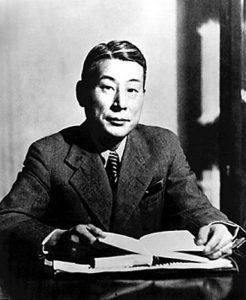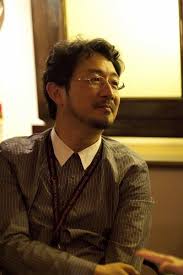examine it in
How Japanese Schindler in the USSR saved thousands of Jews from concentration camps: Tiune Sugihara
 Thanks to the 1993 Oscar-winning film directed by Stephen Spielberg, the whole world learned the story of Oscar Schindler, a German businessman and member of the Nazi party who saved hundreds of concentration camp Jews during the Holocaust. But even today, few have heard of the Japanese Tiune Sugihara, a Japanese diplomat who worked in the Lithuanian consulate in 1940 and repeated Schindler’s feat.
Thanks to the 1993 Oscar-winning film directed by Stephen Spielberg, the whole world learned the story of Oscar Schindler, a German businessman and member of the Nazi party who saved hundreds of concentration camp Jews during the Holocaust. But even today, few have heard of the Japanese Tiune Sugihara, a Japanese diplomat who worked in the Lithuanian consulate in 1940 and repeated Schindler’s feat.
This story, which can be called one of the most striking in the history of the war, is rarely mentioned even in historical reports on the events of the Holocaust.
In 1940, Sugihara worked as Japan’s Vice Consul in Kaunas, which was then the capital of Lithuania. The city had a large and prosperous Jewish community of about 30,000 people. Between 1939 and 1940, the number of Jews in the city increased by several thousand people fleeing persecution in Nazi-occupied Poland. The refugee stories of the horrors that befell the Jews under Nazi rule literally forced blood to be washed away in the veins of local residents. Continue reading
THEORIES OF “NIHONDZINRON” IN JAPANESE BILLS
 In the near future, the Japanese government plans to put into circulation new-type banknotes with new “faces.” Gradually, such money will supersede the existing banknotes of the 1984 model. An interesting feature of Japan is that the banknotes depict the “nichondzinron” theorists [I], great enlighteners, people who made a huge contribution to the formation of the Japanese worldview during the Meiji period.
In the near future, the Japanese government plans to put into circulation new-type banknotes with new “faces.” Gradually, such money will supersede the existing banknotes of the 1984 model. An interesting feature of Japan is that the banknotes depict the “nichondzinron” theorists [I], great enlighteners, people who made a huge contribution to the formation of the Japanese worldview during the Meiji period.
Why aren’t banknotes, for example, the first Minister of Finance of this period or the first president of the First National Bank? After all, these people had to re-create the financial system of Japan according to the Western model. “According to the results of the American trip, Deputy Minister of Finance Ito Hirobumi [II] proposed urgent reforms in the financial sphere, namely, to pass a law on the issue of government securities, create modern Continue reading
Japanese beauty
 Nothing is easier than seeing Mount Fuji. There is a way to examine it in detail – to come over the weekend, to stay in one of the hotels nearby and, from the veranda of your room, to contemplate the beautiful Fuji at sunrise, in daylight, after sunset. But this is far from all: for fans of conquering Everests, there is a special route along which they climb the mountain “wholesale and retail”, sung in every way. The climb takes from five to seven hours, it’s hard to go, but in general they don’t go to the top, but climb, and at night, in order to rise by dawn or simply crawl (whoever succeeds) to the goal.
Nothing is easier than seeing Mount Fuji. There is a way to examine it in detail – to come over the weekend, to stay in one of the hotels nearby and, from the veranda of your room, to contemplate the beautiful Fuji at sunrise, in daylight, after sunset. But this is far from all: for fans of conquering Everests, there is a special route along which they climb the mountain “wholesale and retail”, sung in every way. The climb takes from five to seven hours, it’s hard to go, but in general they don’t go to the top, but climb, and at night, in order to rise by dawn or simply crawl (whoever succeeds) to the goal.
And here comes the solemn moment – you are at the top of the most beautiful and valuable, from the aesthetic, of course, point of view, the mountains of Japan. Then, without fail, you should take a picture of yourself against the background of a landscape fabulously penetrated by the rays of the rising sun (the Continue reading




